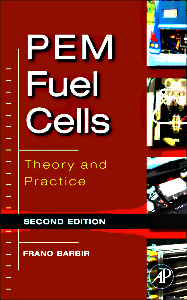Description
PEM Fuel Cells (2nd Ed.)
Theory and Practice
Author: Barbir Frano
Language: English
Subject for PEM Fuel Cells:
Keywords
thermodynamics; hydrogen; electrochemistry; polarization; electrode kinetics
Approximative price 89.42 €
In Print (Delivery period: 14 days).
Add to cart444 p. · 15.5x23.3 cm · Hardback
Description
/li>Contents
/li>Readership
/li>Comment
/li>
Demand for fuel cell technology is growing rapidly. Fuel cells are being commercialized to provide power to buildings like hospitals and schools, to replace batteries in portable electronic devices, and as replacements for internal combustion engines in vehicles. PEM (Proton Exchange Membrane) fuel cells are lighter, smaller, and more efficient than other types of fuel cell. As a result, over 80% of fuel cells being produced today are PEM cells.
This new edition of Dr. Barbir?s groundbreaking book still lays the groundwork for engineers, technicians and students better than any other resource, covering fundamentals of design, electrochemistry, heat and mass transport, as well as providing the context of system design and applications. Yet it now also provides invaluable information on the latest advances in modeling, diagnostics, materials, and components, along with an updated chapter on the evolving applications areas wherein PEM cells are being deployed.
2. Fuel Cell Basic Chemistry and Thermodynamics
3. Fuel Cell Electrochemistry
4. Main Cell Components, Materials Properties and Processes
5. Fuel Cell Operating Conditions
6. Stack Design
7. Fuel Cell Modeling
8. Fuel Cell Diagnostics
9. Fuel Cell System Design
10. Fuel Cell Applications
11. Fuel Cells and Hydrogen Economy
- Comprehensive guide covers all aspects of PEM fuel cells, from theory and fundamentals to practical applications
- Provides solutions to heat and water management problems engineers must face when designing and implementing PEM fuel cells in systems
- Hundreds of original illustrations, real-life engineering examples, and end-of-chapter problems help clarify, contextualize, and aid understanding
These books may interest you

Proton Exchange Membrane Fuel Cells 293.12 €

Proton Exchange Membrane Fuel Cells 111.58 €


